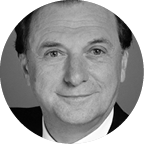
Charles D. Kelman, MD, was the inventor of phacoemulsification, clinical professor of ophthalmology at New York Medical College, and attending surgeon at the New York Eye and Ear Infirmary and Manhattan Eye, Ear and Throat Hospital. Below is an excerpt from a 2004 article featured in Cataract & Refractive Surgery Today in which Dr. Kelman detailed his experience pioneering a technique that would eventually become standard of care.
The Genesis of Phacoemulsification
By Charles D. Kelman, MD
Four years after my residency, I drafted a grant proposal to study the effects of freezing on the ciliary body, retina, and choroid. I went to bed concerned that the Hartford Foundation would not find the topic of interest, awoke in the middle of the night, and, almost in a trance, added an addendum to my application that would affect the rest of my life and the lives of 100 million patients: “In addition to the freezing studies, this investigator will develop a method for removing a cataract through an incision small enough so that no hospitalization will be required.”
Mr. E. Pierre Roy, the head of the John A. Hartford Foundation, could easily have rejected my application and put an end to this matter. Instead, he had confidence in my abilities and gave me a 3-year grant, although I did not have the vaguest idea of how to realize my idea.
INITIAL STRUGGLES
Mr. Roy’s confidence was misplaced for 2 years and 8 months, while I tried everything I could imagine. I first attempted to capture the cataract within a folding lens bag, crush it inside the bag with manual disintegrators and then remove the device containing the fragmented lens material from the eye. The rotating devices I tried simply spun the cataract around inside the anterior chamber. High-speed cutting needles, a miniature blender, drills, tiny meat grinders, engraving tools—nothing worked. All the devices yielded opaque corneas in animal eyes.
I had, meanwhile, allowed my hair to grow down to my shoulders, and my teeth badly needed a cleaning. Sitting in my dentist’s chair, I became interested in the ultrasonic tool he was using to clean my teeth. He explained that its high-frequency vibration removed tartar without disturbing the tooth itself. I raced out of his office with the bib still hanging around my neck and returned 1 hour later with a cataractous lens. Because I was able to engrave lines on the lens without it jumping off my finger, I believed that I could break up a cataract inside the eye without it spinning or vibrating against the corneal endothelium.
Cavitron Corporation (acquired by Coopervision, followed by Alcon) ultimately made a prototype with a handpiece that incorporated I/A, rather than only irrigation, as with the original dental instrument. My first efforts with this device resulted in opaque corneas until I began using a physiologic solution, imported from the Centro de Oftalmologia Barraquer, in Barcelona, Spain, in place of the simple saline solution. I also realized that the high temperatures that the procedure created inside the eye would denature the corneal proteins.
After several months of successful animal testing, I operated on my first human case, a man suffering from a painful blind eye due to burned-out glaucoma. The strong surge of suction caused the cornea to collapse 30 to 40 times during the 70-minute phacoemulsification. The next day, his eye was a bag of pus that had to be removed.
I spent 2 years seeking a way to prevent corneal collapse and finally found a company in North Carolina that manufactured a device that sensed arterial flow. Cavitron Corporation incorporated this feature into the phacoemulsification device’s aspiration line with an air-relieved valve. If the speed of the current in the aspiration line exceeded the speed of the irrigation, then a valve opened to halt suction immediately.
One year later, I worked up the nerve to operate on the eye of a patient with central retinal artery occlusion and no light perception. If I had failed that time, I probably would have abandoned the project. A specially designed, 3-D micromanipulator supported the weight of the cumbersome phaco handpiece and steadied the phaco tip inside the eye for long periods of time. I deemed the operation a success when the patient achieved light perception postoperatively. The severe striate keratitis, present on the first postoperative day, subsided after 6 weeks.
HURDLES
The hospital. At that time, there were no rules against performing new procedures. Nonetheless, after I had successfully completed a few more cases, the chief surgeon at Manhattan Eye and Ear Hospital, in New York, tried to convince the board to rescind my operating privileges. Ultimately, they established a committee to oversee the results of every patient. Fortunately, by this time, my results were quite good.
The profession. Although I began teaching phacoemulsification in 1970 with the first commercially available machine, the profession vehemently protested the adoption of the technique. Most if not all surgeons at that time used only loupes for magnification. As a result, they had to learn to use an operating microscope as well as to perform phacoemulsification. Many politically important ophthalmologists were older and either unwilling or unable to learn these new modalities. The fact that I, the technique’s main proponent, was playing the saxophone and singing in the casinos of Atlantic City, New Jersey, and appearing on the Johnny Carson Show did not help the cause.
The companies. The lead engineer at Cavitron Corporation had encoded and threatened to withhold all the critical information about the new phacoemulsification machine in a play for a promotion to vice president around 1971. Cavitron Corporation fired him, but the company was then ready to abandon the project. Fortunately, Alan McMillan, an entrepreneur from California, took over the project and developed a model that he eventually sold to Coopervision and, finally, Alcon Laboratories.
The study. The American Academy of Ophthalmology initiated a major comparative study of phacoemulsification and intracapsular cataract extraction (ICCE). At my insistence, the chairman of the department of mathematics and statistics at Columbia University, in New York, monitored the study›s results. The investigators› reluctant conclusion was that phacoemulsification delivered the same quality of results as ICCE, but the report›s conclusion stated that ICCE was the preferred and only method to use in many instances.
The classification. The next major attack on phacoemulsification occurred when opponents got the FDA to classify the procedure as experimental and, therefore, nonreimbursable. Reversing this decision required thousands of letters from patients and an appearance before the FDA by the renowned television doctor, Marcus Welby, MD.
The IOL. As IOLs became more popular in the late 1970s, many surgeons gave up on phacoemulsification because implanting the lenses required larger incisions. The advent of lenses that could fit through a smaller incision, such as the Omnifit (Precision Cosmet Company and Heyer Schulte) and foldable IOLs, revived the procedure.
CONCLUSION
When I began performing phacoemulsification, no accurate way for measuring an eye’s endothelial cell count existed. Although patients’ corneas recovered, I am certain that the endothelial cell loss was unacceptable in early cases. If I had not been in the right place at the right time and had an obsessive motivation, I believe we would still be performing ICCE. I thank my colleagues, supporters, and collaborators. I also thank my opposition for inspiring me to try harder.

Notable Quotes From:
The Pioneers of Phaco
With Blake Williamson, MD, MPH; Andy Corley; Charles Williamson, MD; and James H. Little, MD
Listen to the full episode here.
James H. Little, MD, played a pivotal role in the advancement of phacoemulsification.
“In 1968, I was in the surgery dressing room, and a general practitioner that had just returned from Tokyo of where Charlie Kelman had presented those 12 initial cases of his. And he said that Dr. Kelman was able to remove the cataract or the lens through 2.5-mm opening. Well, that made me blink a few times, and so I got a hold of Charlie, and I said, “Hey, that machine you got there, is that available?” He said, “No, not yet.” This is 1968. He said, “There’s so many things we still have to work out. There’s a lot of problems that this machine hasn’t faced yet.” So, I called him in 1969, I called him in ‘70, I called him in ‘71, he said, “OK, we got it. We got it. Here we go.”
On the naysayers: “They ended up referring a lot of cases to us. When they got older, and they didn’t want to do surgery, who’d they send them to? The guy they didn’t used to like.”

Andy Corley established the premium channel for cataract surgery, a paradigm shift in which the patient pays for the enhanced value they receive from an advanced technology IOL.
“I would make a joke when I was on the podium in the early days, as things were moving quite quickly, and we had new procedures and people were always skeptical. I would say, ‘Do you know what the difference is between a pioneer and a buccaneer?’ The people would look at me, and they’d say, ‘No, what?’ I’d say, ‘About 3 years.’”

Charles Williamson, MD, is a pioneer of outpatient ophthalmic surgery and clear corneal cataract surgery.
“I got out [of training], and, at that time, in 1980, you could not do surgery in a freestanding outpatient surgery center. We had to do surgery at the hospital. The local hospital that we did surgery in when I got out would make us go there and sit most of the day … being the young guys who just got out, they had older doctors in there, and they wouldn’t give us block time. Because of that, we would have to go into a case and then come back and sit down in the doctor’s lounge and listen to all these doctors’ lounge stories … it was an all-day affair … until I said, when I got out, ‘All surgery is going to be outpatient, and we need to start building an outpatient surgery center.’”


